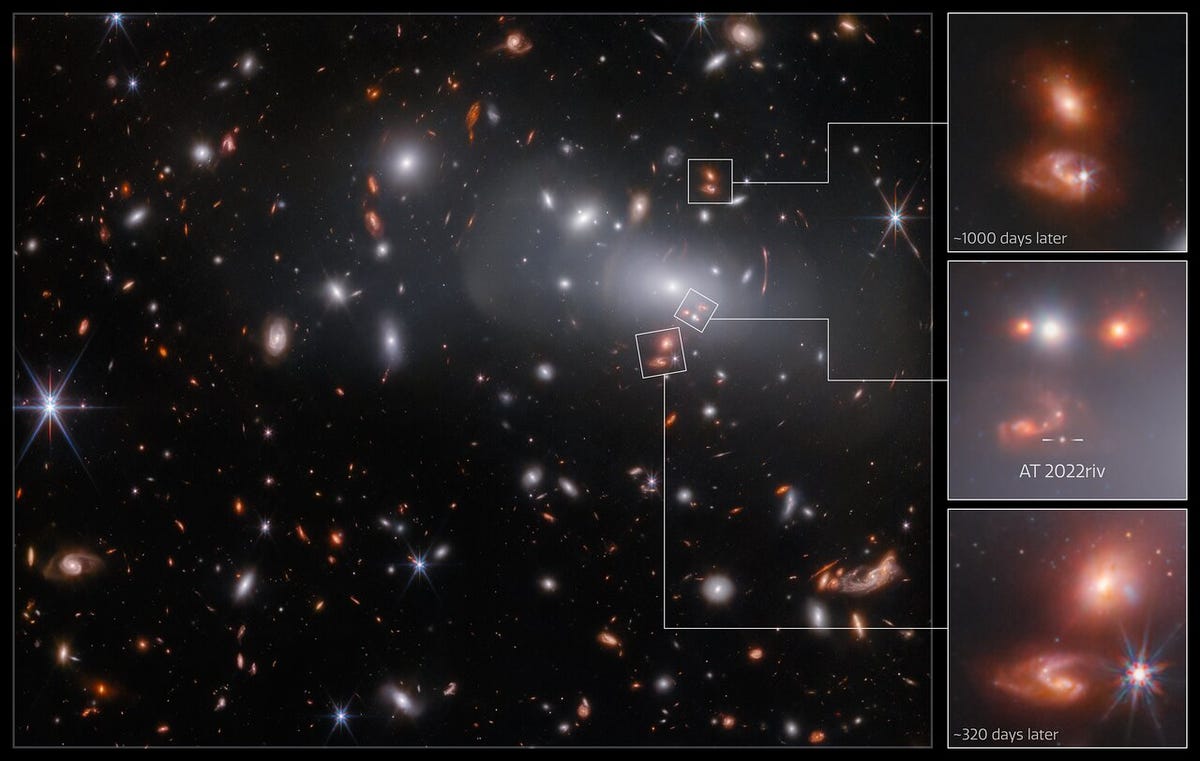
The cloudy-looking area off to the right reveals three different views of the same background galaxy.
ESA/Webb, NASA & CSA, P. Kelly
The James Webb Space Telescope has pulled off a nifty cosmic trick. It captured a view of a distant galaxy three times in one image, revealing the story of a star that exploded and faded.
Webb, a joint project from NASA, the European Space Agency and the Canadian Space Agency, got an assist from a galaxy cluster called RX J2129 that’s about 3.2 billion light-years away from us. The cluster allowed Webb to take advantage of a phenomenon called gravitational lensing, where a space object acts like a giant magnifying glass to show what lurks behind it.
Not only does the galaxy appear three times, but it appears at different points in time. A supernova — a bright exploding star — is visible in the earliest version of the galaxy. The second and third images, from about 320 days and 1,000 days later, show that the supernova has faded away. An annotated version of the image points out these cool features:

 Enlarge Image
Enlarge Image
This annotated version of the Webb view shows the three different versions of the galaxy, each from a different moment in time. The supernova is visible in the earliest view, but it has faded in the later ones.
ESA/Webb, NASA & CSA, P. Kelly
How is this time machine action possible? “Because mass in the galaxy cluster is distributed unevenly, rays of light emitted by the supernova are bent by the lens in different amounts, and so they take longer or shorter paths to the viewer — resulting in separate images,” ESA explained in a statement last week. Think of the cluster as a lumpy, uneven magnifier, which is also why the galaxy’s orientation and size isn’t uniform across the views.
Astronomers originally spotted the supernova in observations from the elder Hubble Space Telescope, showing once again how Hubble and Webb can team up to help us better understand our universe.
